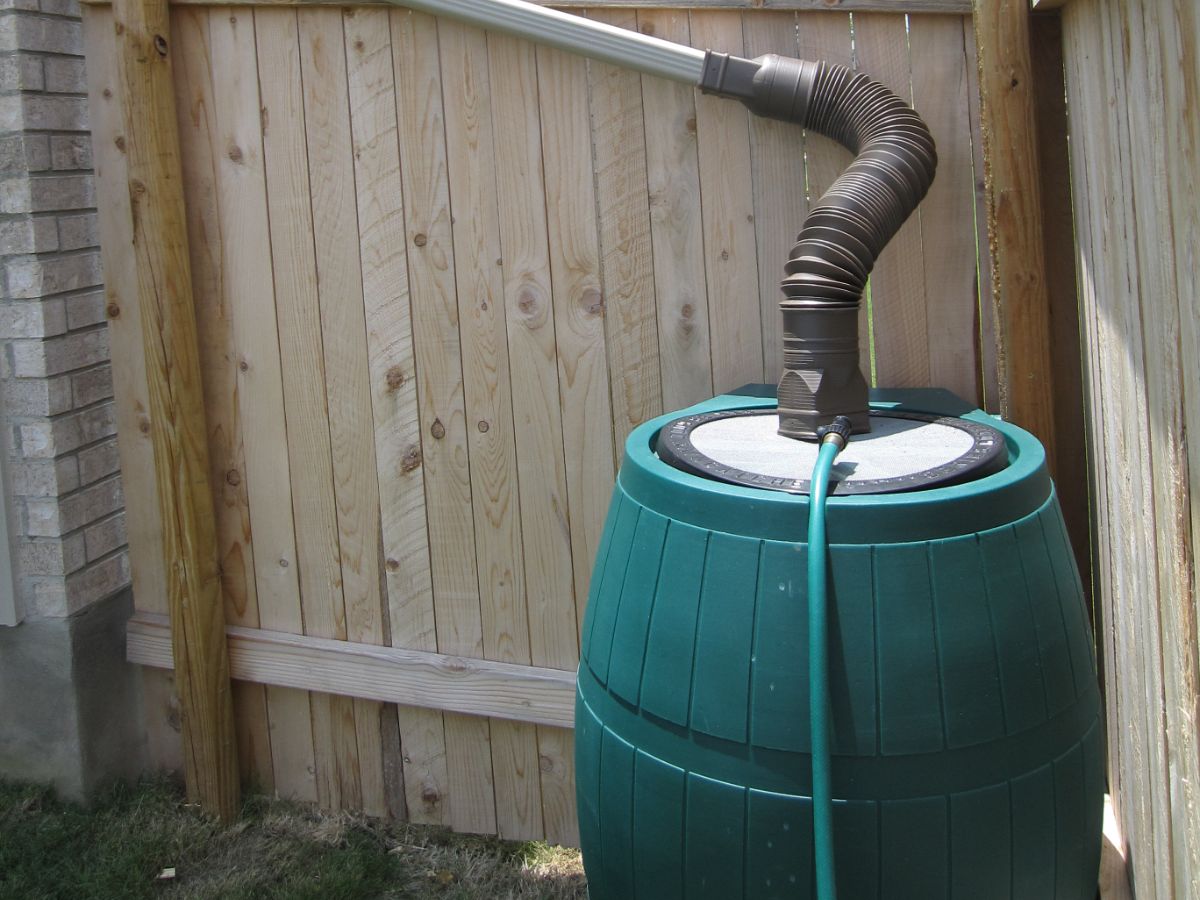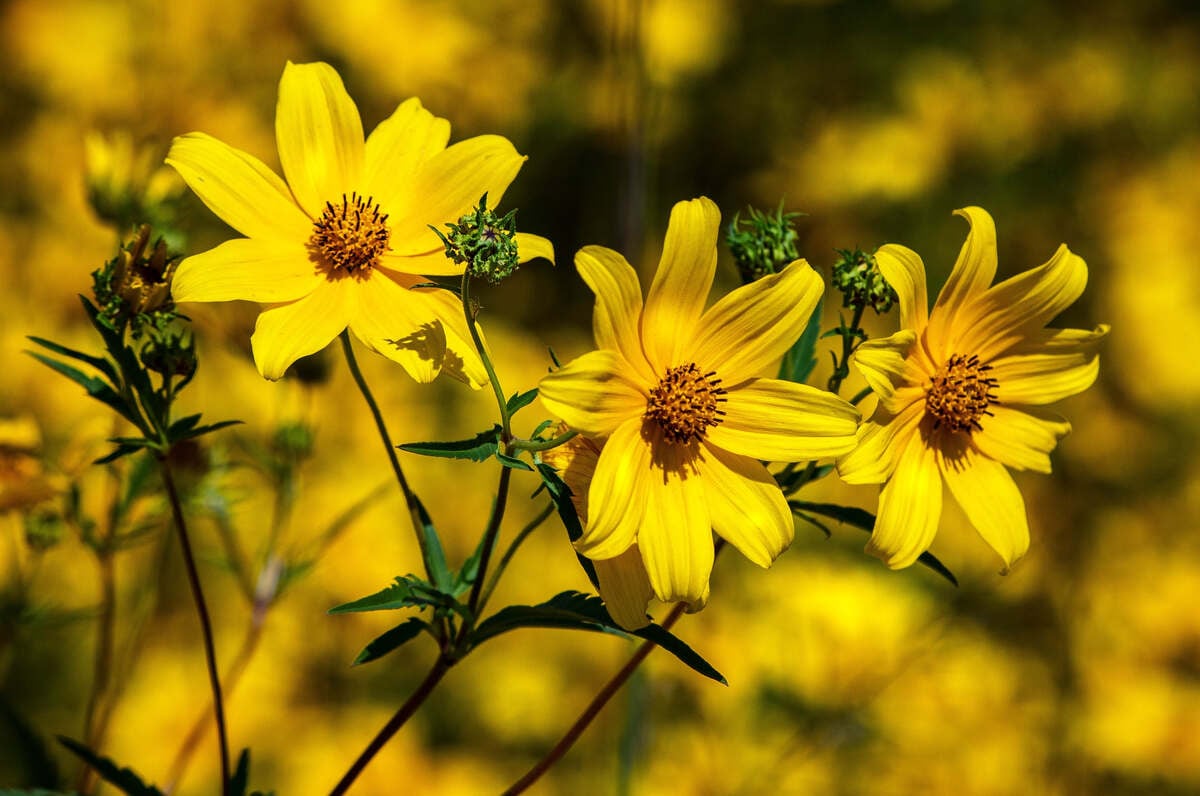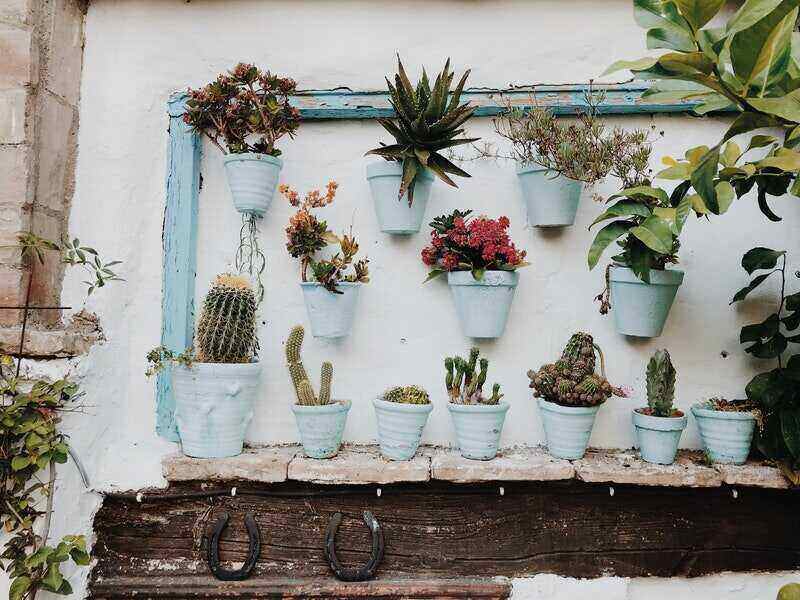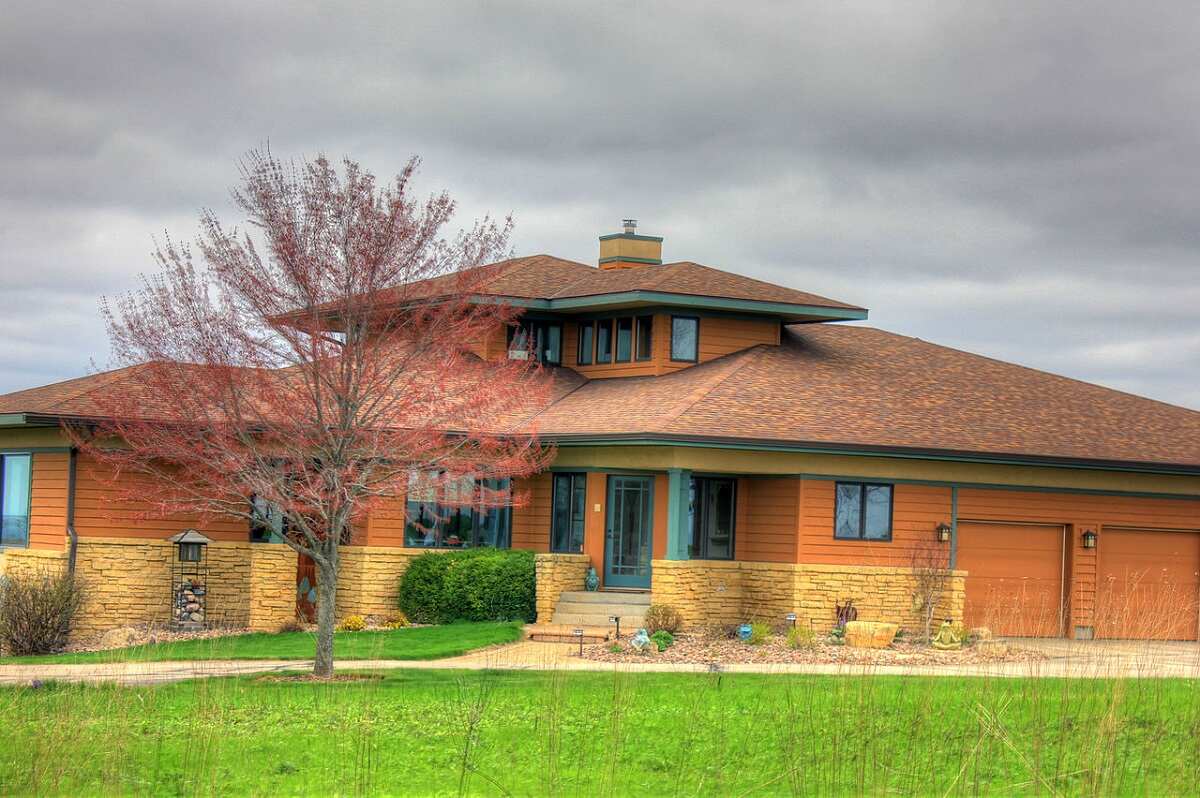
Does excessive lawn and landscape maintenance have you sleepless in Seattle on Saturday mornings? We might have the solution for you. With these 12 low-maintenance landscaping ideas for Seattle, you can have the stand-out landscape of your dreams without sacrificing your weekends to yard work.
12 Low-Maintenance Landscaping Ideas for Your Seattle Yard
1. Make the Rain Work for You
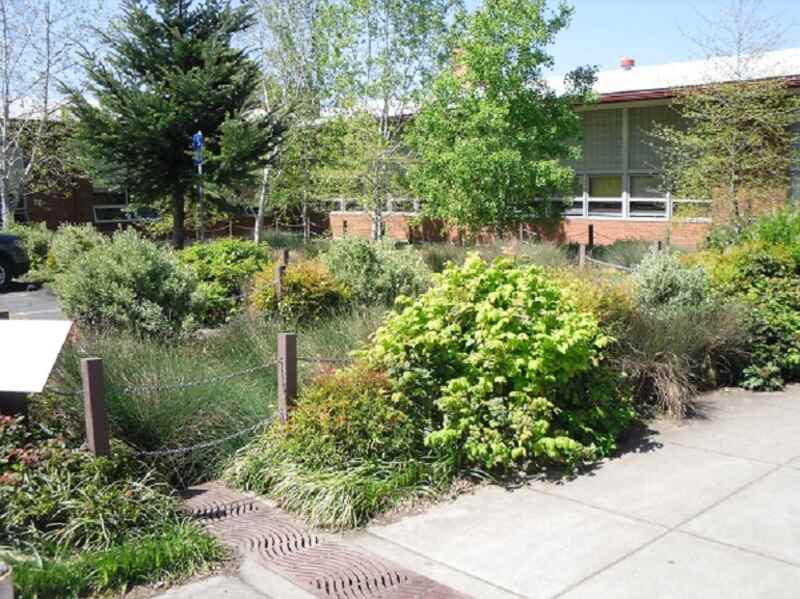
Seattle is synonymous with drizzly days, so instead of letting the dreary weather rain on your parade, use it to your advantage with a rain garden. A rain garden runs on stormwater runoff, so you’ll never have to worry about watering it once it’s established.
Though a high-quality rain garden takes effort to design and build, it requires much less maintenance than a formal garden in the long run. Plus, a rain garden can help you manage flooding and erosion issues on your property.
When choosing plants for your rain garden, you’ll want ones that can tolerate periods of both drought and flooding since Seattle has dry summers and wet winters. Some of the best rain garden plants for the Pacific Northwest are:
- Oregon grape (Berberis aquifolium): A tall evergreen shrub (3-6 feet tall) with light yellow blossoms and blue grape-like berries. The berries are edible.
- Beach strawberry (Fragaria chiloensis): Spreading, perennial groundcover with tiny white blossoms in the spring and small, edible wild strawberries follow.
- Daylilies (genus Hemerocallis): There is a large selection of flower colors and varieties; they’re easy to grow.
2. Emerald City Evergreens
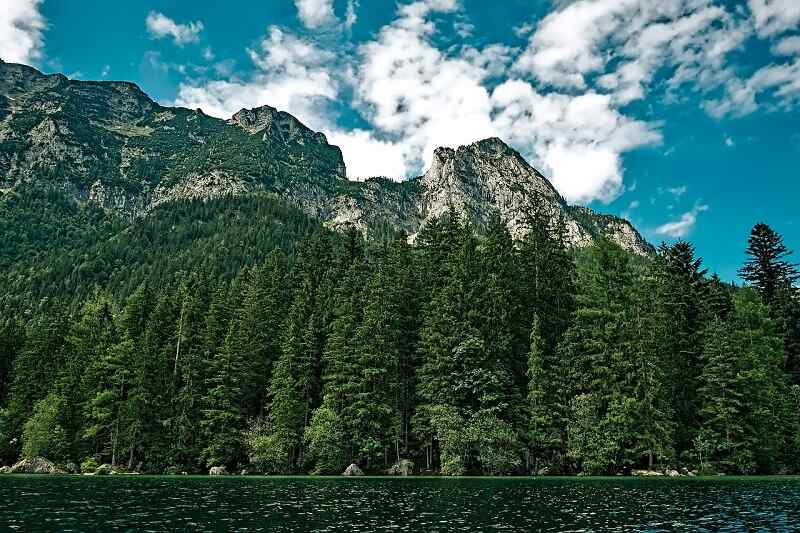
Seattle’s sprawling, scenic evergreen forests have earned it the nickname Emerald City. Those identical evergreens could also be a key element in your low-maintenance landscape. Since evergreens keep their leaves year-round, you won’t have to spend your crisp autumn days raking and leaf-blowing if you plant these gems.
Evergreens aren’t all towering trees, either. Many evergreen shrubs and ground covers could find a home in your landscape. Some evergreens on the list of Seattle’s most common trees include:
- Douglas-firs (Pseudotsuga menziesii): Young fir trees are regularly used as Christmas trees. Homeowners can choose from a wide variety of dwarf cultivars.
- Western red cedars (Thuja plicata): This coastal native, referred to as the “Tree of Life,” has a dense growth that remains evergreen all year long; it creates a visually attractive hedge when kept pruned.
- Edith Bogue Southern magnolia (Magnolia grandiflora ‘Edith Bogue’): A perfect yard tree with evergreen leaves that is safe to plant near power lines. A stand-out in Seattle, with substantial white blossoms and a fantastic smell.
3. Embrace Seattle Natives
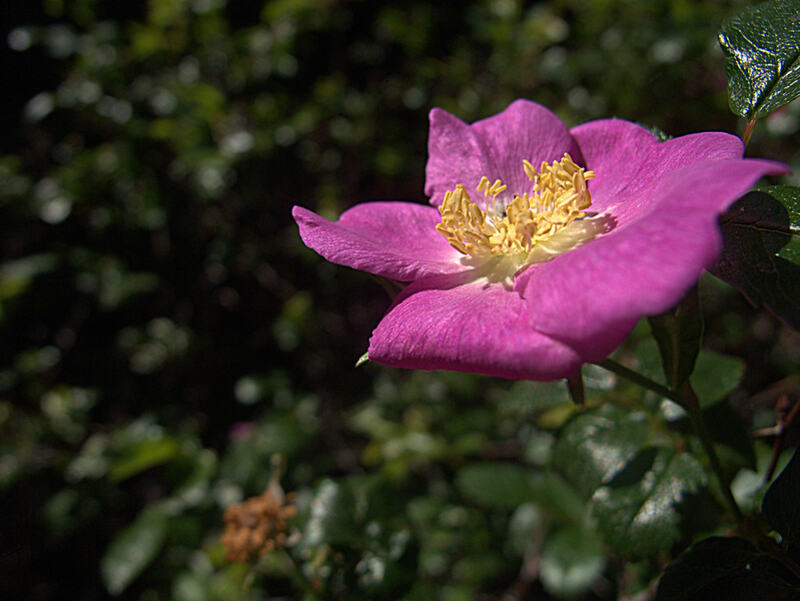
Seattle’s forests have a lot more to offer than evergreens. This area has hundreds of native flowers, shrubs, and trees adapted to the local climate, soil, and pests. If you use those natives in your landscaping, you’ll spend much less time on maintenance. Native plants need less watering, fertilizing, and pest control than non-natives.
You should be able to find the perfect native plant for any landscaping need. The diverse selection of Seattle natives ranges from colorful flowers to ornamental grasses like:
- Clustered wild rose (Rosa pisocarpa): A native rose that can reach heights of 3-6 feet. It has dark pink flowers that are followed by seeds that feed wildlife. (pictured above)
- Blue wildrye (Elymus glaucus): It can grow 2-6 feet tall and has thin, flat, blue-green leaves. It is a hardy, cool-season bunch grass with a short lifespan of 3-4 years.
- Mock orange (Philadelphus lewisii): This loosely branched flowering shrub blooms lavishly in the spring with white flowers that smell like orange blossoms.
4. Plant Pacific-Friendly Perennials
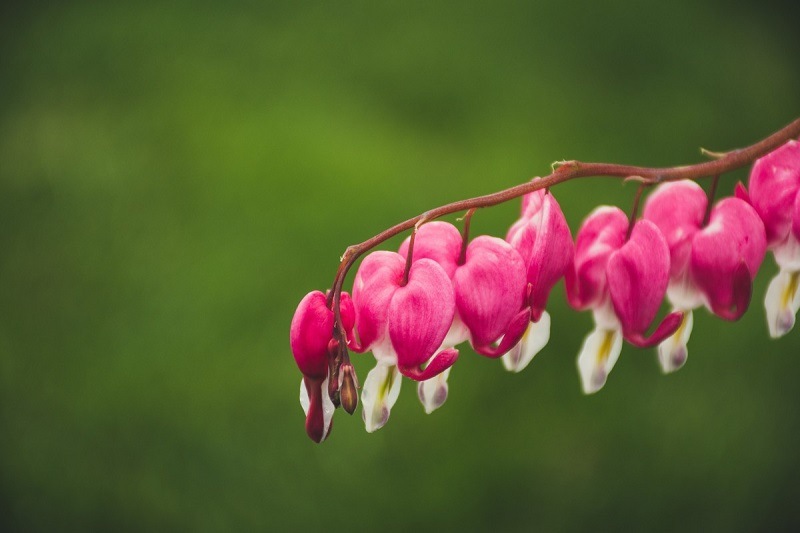
While searching for suitable evergreens and other native plants for your landscape, looking for perennials is also a good idea. Perennials are plants that return on their own every year after their dormant season. With a low-maintenance garden full of perennials, you won’t have to plant new flowers every spring as you would with annuals.
The great news is that perennials come in all different colors, shapes, and sizes, plus several of them thrive in the Pacific Northwest. Showy perennials that would do well in your Seattle flower beds include:
- Pacific bleeding heart (Dicentra formosa) (pictured): The Pacific bleeding heart’s flowers, which can be white, pink, or red and have a heart-shaped bloom, cluster in the springtime.
- Red valerian (Centranthus ruber): This old-fashioned wildflower attracts butterflies and bees, with clusters of small, deep-red flowers perched above dark green leaves.
- Milky bellflower (Gadellia lactiflora): This perennial produces an abundance of star-shaped, blue to lilac-blue flowers throughout the summer.
5. Beat the Dry Season with Xeriscaping
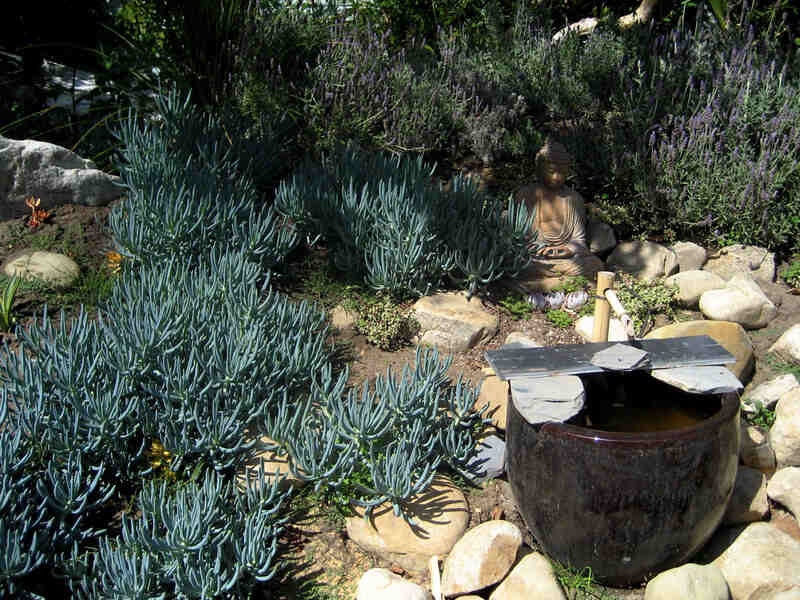
Even though most outsiders think of Seattle as the rainiest city in the country, locals know the summers here can be pretty dry. Save yourself the trouble of frequently watering your landscape during the hottest months of the year with xeriscaping.
Xeriscaping is a landscaping method that uses drought-tolerant plants and hardscapes such as decorative stone to conserve water. Turning your regular landscape into a xeriscape can drastically reduce the time you spend gardening in the summer and the amount of money you spend on your water bill.
Good plants for xeriscaping include succulents (yes, some succulents can survive Seattle winters) and drought-tolerant natives such as:
- Western wild ginger (Asarum caudatum): The heart-shaped, lush, dark green leaves of wild ginger are well known, rarely growing taller than 10 inches, and are shade tolerant, making them perfect ground cover plants.
- Western sword fern (Polystichum munitum): Western sword fern is one of the biggest (up to 59 inches in height) and most common evergreen ferns. With its long, sword-like fronds, it’s an excellent option for shade gardens and xeriscaping.
- Evergreen huckleberries (Vaccinium ovatum): A native broadleaf shrub that blooms in the middle of spring with eye-catching pink and white flowers and glossy green leaves. In the early fall, it produces an abundance of juicy berries.
6. Let Automatic Sprinklers do Your Watering
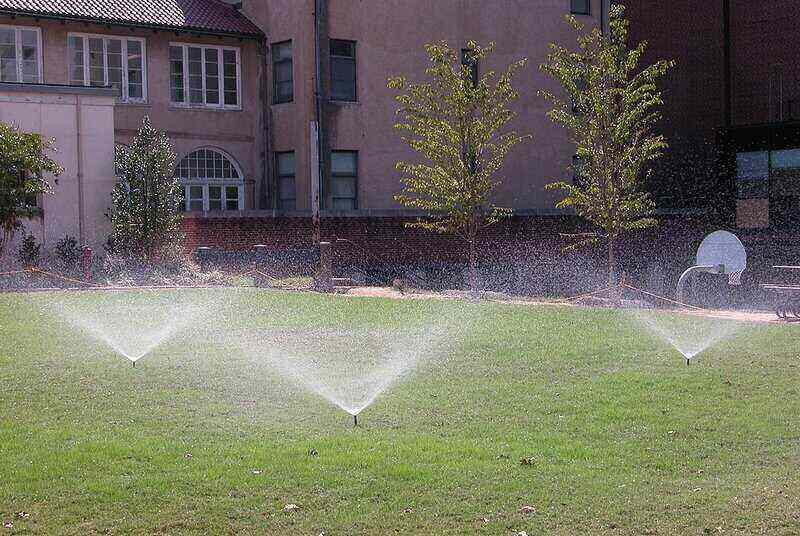
Automatic sprinkler systems are another helpful hack to get your garden through dry summers with little effort. With an automated irrigation system, all you’ll have to do is set a timer once, and your sprinklers will handle the rest.
While installing an irrigation system might result in high upfront expenses, it is undoubtedly a handy and possibly cost-saving choice when caring for your lawn.
Automatic sprinklers will:
- Increase property value as buyers like the easy maintenance of an already lush landscape with a sprinkler system in place
- Conserve water by setting your system to optimum watering times and locations so you waste less water
- Save time and money in the long run with lower water bills and less work
7. Don’t Underestimate the Power of Mulch
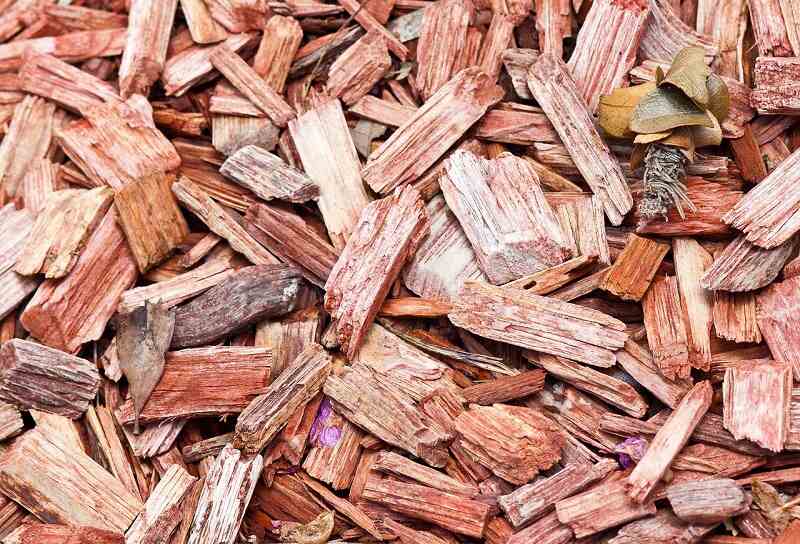
You’ve probably seen mulch in landscape beds all over the place — you might even have it in your own yard.
Remember that organic mulches such as bark or wood chips will require more work since they’ll break down into the soil and need replacement every spring. Inorganic mulches like rocks or rubber last a lot longer.
Pine bark is the cheapest mulch material, with an average price of $28 per cubic yard. On the high end, a cubic yard of rubber mulch might cost up to $218.
Mulch is not just a pretty backdrop for your plants. A layer of mulch in your garden can:
- Prevent weeds from sprouting while improving soil quality as it decomposes
- Maintain soil temperature, protecting the roots from extreme cold and heat
- Retain moisture, yet another crutch through dry summers
8. Hardy Hardscapes
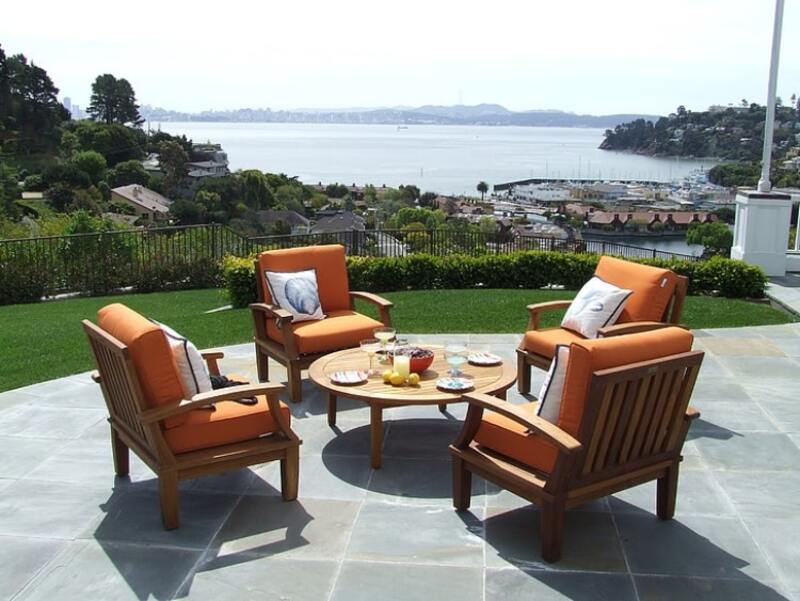
Do you like the idea of a landscape feature that can survive rain, drought, freezing temperatures, or whatever else Mother Nature throws at it? What about one that requires virtually no upkeep? Hardscaping might be the way to go for your low-maintenance landscape.
Hardscapes are elements in your landscape other than plants. Think paver walkways, stone retaining walls, or outdoor living spaces like decks, pergolas, and patios.
Hardscapes are great because they:
- Save water: In contrast to grass, flowers, or other plants, they don’t require watering.
- Reduce upkeep: When compared to living landscape elements, hardscaping takes minimal care.
- Increase property value by constructing an extension to your home that improves the amount of usable living space
The only downside? Installing a patio or other hardscapes usually takes a lot of money and, if you choose the DIY route, a lot of work.
9. Rock Your World
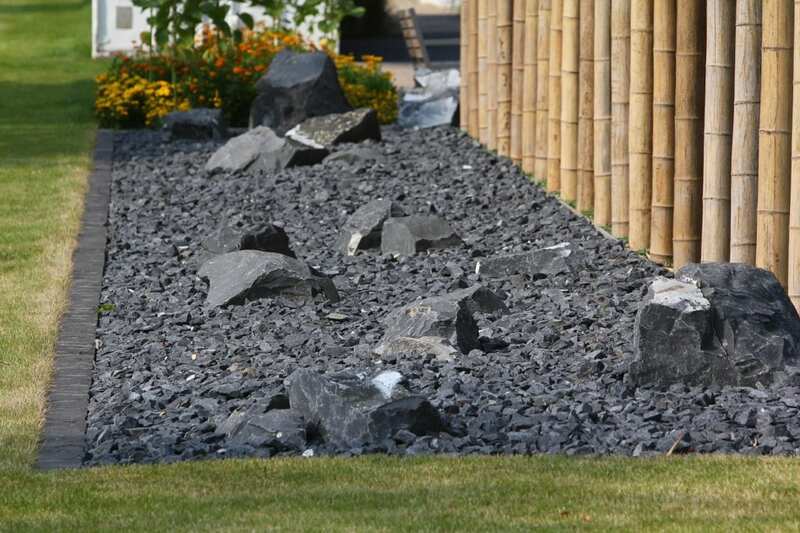
When it comes to low-maintenance landscaping, a rock garden serves the same purpose as a hardscape. It fills up space with something aesthetically pleasing that you don’t have to take care of.
The difference is that rock gardens add more of a natural touch, and they’re typically easier to install than a hardscape made with pavers or a similar material.
If you’re unfamiliar with the concept, a rock garden design consists of:
- Water features
- Focal points
- Stones
- Plants
The benefits of a well designed rock garden are many:
- Lasts all year with little impact from harsh weather, so you will never have a desolate landscape while you wait for your flowers to bloom or worry about the cold
- Provides a perfect space for incorporating a water feature into your landscape design to create a peaceful haven in your backyard
- Saves time: A rock garden will require much less maintenance than a traditional garden full of plants.
10. Consider Containers
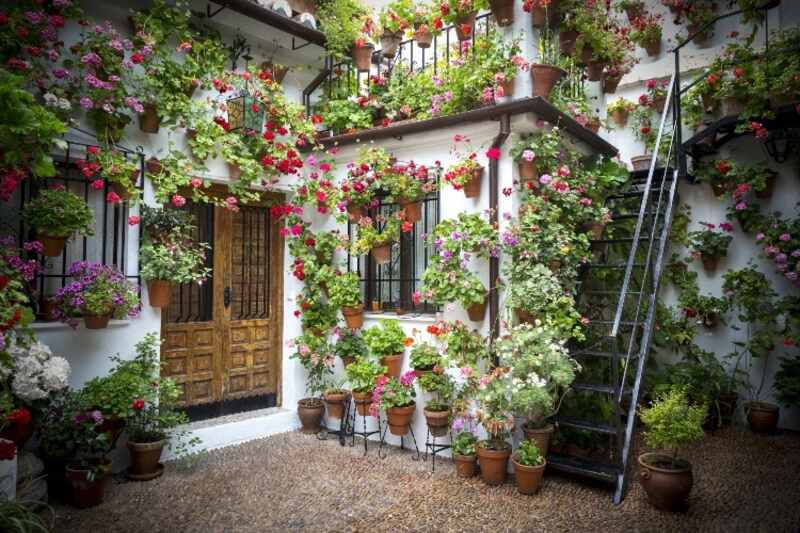
Even if you don’t have the green thumb necessary to tend a traditional garden, you can enjoy an outdoor space filled with thriving plants. Instead of putting your plants in the ground, place them in pots to create a container garden.
Your potted plants will be much easier to take care of than plants in the ground, especially if you have physical limitations that keep you from working on your knees.
Aside from being low-maintenance, container gardens are perfect for Seattle landscapes because they:
- Survive! Your plants won’t have to endure the cold, wet weather outdoors. Simply bring the pots inside when temperatures start to drop.
- Fight the winter blues. Studies have shown houseplants to lower stress and anxiety while also increasing mental well-being and productivity.
- Bring your personal version of one of Seattle’s glamorous gardens into your home for an indoor oasis.
11. Stay grounded with ground cover
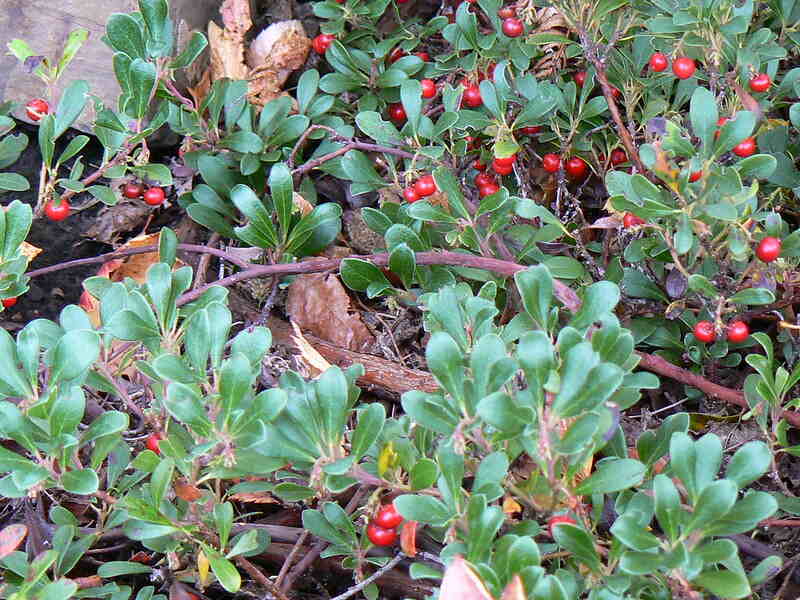
Photo Credit: Willamette Biology / Flickr / CC BY-SA 2.0
Ditch the lawn mower and take back your weekends by replacing your grass with a ground cover plant. Ground covers can give your lawn the lush, textured look you want without the hard work of traditional lawn care.
There are many types of ground cover, some flowering with colorful blooms and some that are less conspicuous, green varieties.
Groundcover options recommended for your Seattle yard include:
- Kinnikinnick (Arctostaphylos uva-ursi): This Washington state native, also known as bearberry, is a mat-forming shrub with woody, reddish-brown, 6 to 8-inch-tall branches. It produces clusters of pinkish, hanging bell-shaped flowers and red berries.
- Wild Lily-of-the-Valley (Maianthemum dilatatum): The spring blossoms of the lily of the valley are perfect in any wildlife garden. This plant spreads quickly, tolerates shade, and provides excellent ground cover around hedging and trees.
- Orange Honeysuckle (Lonicera ciliosa): Non-aggressive, shrub climbing vine that attracts hummingbirds and won’t smother the plant it supports. There are lovely clusters of orange trumpet-shaped flowers.
12. Artificial Intelligence
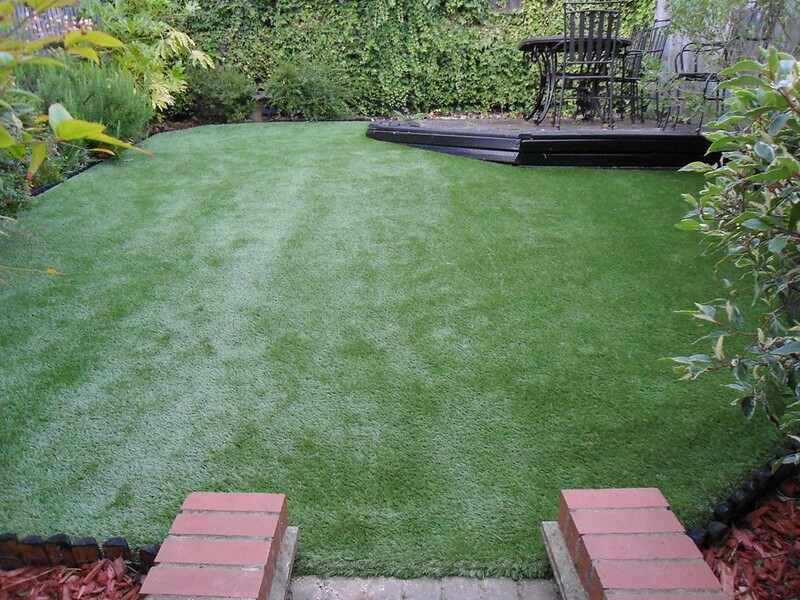
Artificial grass is a great option for your low-maintenance landscape if you aren’t opposed to “fakes” in your life. It’s the most low-maintenance option on this list since it doesn’t require any care.
Your children and pets won’t be able to destroy it (unless they really try … which some would). Their precious little trampling feet can’t kill something that was never alive in the first place.
Artificial lawns, like everything else, come with their own pros and cons:
- Low-maintenance because it doesn’t need to be watered or weeded, but it can trap bacteria
- The initial cost to install artificial grass is higher ($12.33 per square foot on average), but will save you time and money over its lifetime.
- Always looks healthy and usable, but synthetic grass can get extremely hot in the summer
FAQ About Low-Maintenance Landscaping in Seattle
Native plants almost always will need less maintenance than non-natives. Some Seattle-friendly options include:
• Beach strawberry (Fragaria chiloensis)
• Kinnikinnik, aka bearberry (Arctostaphylos uva-ursi)
• Evergreen huckleberries (Vaccinium ovatum)
The most low-maintenance native plants for your Seattle yard also depend on the soil type and the level of sun exposure. The City of Seattle has developed a helpful guide for choosing the best low-maintenance plants for your property’s specific conditions.
Water in the morning since water evaporates in the midday sun. For annuals, shrubs, and trees, water so that the top 12-18 inches of soil is wet. For lawns, water so that the top 4-6 inches is wet.
Any beautiful landscape, even low-maintenance ones, needs regular and proper care. Check out this Seattle landscape maintenance calendar for specific advice.
Having plants in your home won’t actually purify the air, at least not that much, according to a recent study from Drexel University researchers Bryan Cummings and Michael Waring. But, they have been proven to reduce stress and anxiety while improving mental health and productivity.
When to Call a Landscaping Professional
You might not be confident in your ability to design and install a low-maintenance landscape, and that’s OK. This is where local professional landscapers come in, with expert tips and tricks. We have the best Seattle landscaping pros near you.
That’s right, the secret 13th method of low-maintenance landscaping is to hire a professional to take care of your yard for you. It might take a lot of work to put in that paver patio, but you won’t be the one doing it, and that’s all that matters, right?
At the end of the day, the most important thing is that you spend your precious hours doing what you love most. Unless what you love most is yard work (in which case, why are you even reading this?), these 12 low-maintenance landscaping ideas for Seattle might be for you.
Main Photo Credit: Yinan Chen / Wikimedia Commons
